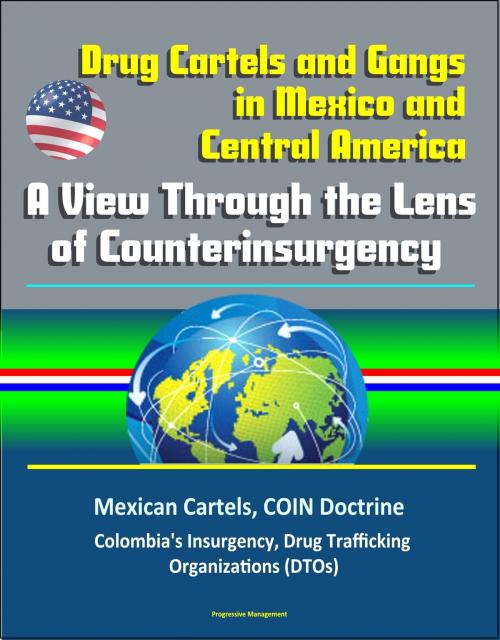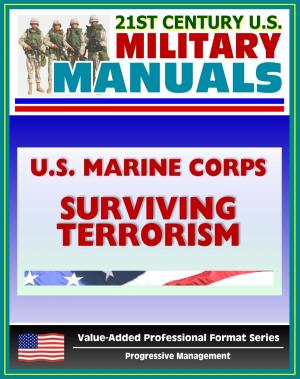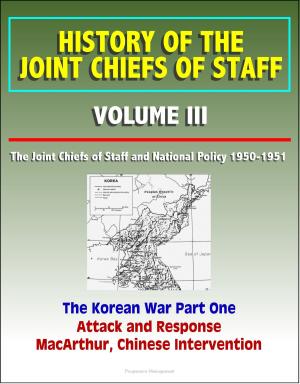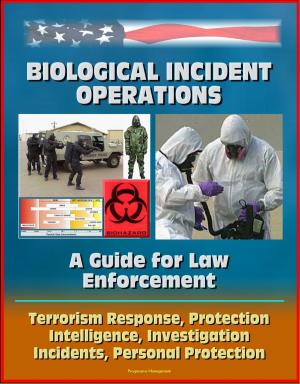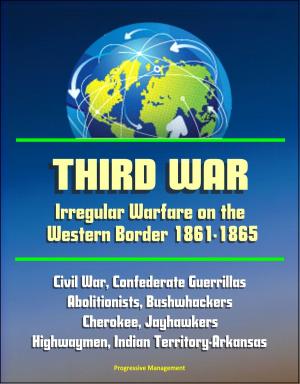Drug Cartels and Gangs in Mexico and Central America: A View Through the Lens of Counterinsurgency - Mexican Cartels, COIN Doctrine, Colombia's Insurgency, Drug Trafficking Organizations (DTOs)
Nonfiction, History, Americas, Mexico, Social & Cultural Studies, True Crime| Author: | Progressive Management | ISBN: | 9781310187476 |
| Publisher: | Progressive Management | Publication: | May 21, 2016 |
| Imprint: | Smashwords Edition | Language: | English |
| Author: | Progressive Management |
| ISBN: | 9781310187476 |
| Publisher: | Progressive Management |
| Publication: | May 21, 2016 |
| Imprint: | Smashwords Edition |
| Language: | English |
This excellent report has been professionally converted for accurate flowing-text e-book format reproduction. For decades, the United States, and its partner Latin American nations, have fought to stop the flow of illicit drugs from South America to the streets of North America, yet the drugs continue to feed the addiction of the 5.8 million cocaine users in the United States today. The Unites States has confronted the problem at all levels— primarily demand reduction, source eradication, and interdiction. While addressing demand and supply are critical to ending the international drug trade, the transit zone countries of Mexico and Central America are caught in a crossfire of widespread violence, corruption, and weakened state security perpetuated by this multi-billion dollar drug industry. The situation in the region has regressed beyond criminal activity to a drug-fueled state of siege—a criminal insurgency, which has directly threatened the lawfulness and security of transit zone countries. This paper examines the drug war in Central America and Mexico, highlighting its similarities to other insurgencies, and offers ideas on how to apply counterinsurgency doctrine to influence the effort to deny secure transshipment points to drug cartels. In doing so, this paper highlights both the intellectual and physical linkages between the commonly accepted military history of insurgencies and the history of the fight against drug trafficking organizations. To that end the United States, Mexico, and Central America need to challenge drug trafficking organizations and gangs through a regional counterinsurgency strategy that denies impunity for drug cartels, and enables Central American and Mexican governments to reestablish the legitimacy of their governing and legal institutions and regain control over all of their territory for the long term.
CHAPTER 1 - INTRODUCTION * CHAPTER 2 - BRIEF HISTORY OF CONFLICT AND DRUG TRAFFICKING: THE ROAD TO TODAY'S DILEMMA * Generations of Conflict and Drug Trafficking: a Training Ground for Criminals * Squeezing the Balloon: Central America and Mexico Become DTO's Preferred Route * CHAPTER 3 - DRUG CARTELS, DRUG GANGS, AND INSURGENCIES * Defining Criminal Insurgency * Three Phases of Insurgency and the DTO Connection * Linking Drug Gangs and Insurgency * Mexican Drug Cartels: The Criminal-Insurgency Leadership * Lessons from Colombia's Insurgency * CHAPTER 4 - DEFEATING THE DTOS: A UNIFIED COIN APPROACH * Aligning Drug Control Strategy with COIN Doctrine * The Merida Initiative: Unprecedented Cooperation in Need of a Full Commitment * CHAPTER 5 - CONCLUSION AND RECOMMENDATIONS * Central America and Mexico's History Provides Key Roots of Today's Dilemma * DTO and Gang Links to Insurgency Provide a New Lens to View the Problem * Colombia's Insurgency Offers Applicable Lessons for Central America and Mexico * Drug Control Strategy and COIN Doctrine Need to be Leveraged * BIBLIOGRAPHY
This excellent report has been professionally converted for accurate flowing-text e-book format reproduction. For decades, the United States, and its partner Latin American nations, have fought to stop the flow of illicit drugs from South America to the streets of North America, yet the drugs continue to feed the addiction of the 5.8 million cocaine users in the United States today. The Unites States has confronted the problem at all levels— primarily demand reduction, source eradication, and interdiction. While addressing demand and supply are critical to ending the international drug trade, the transit zone countries of Mexico and Central America are caught in a crossfire of widespread violence, corruption, and weakened state security perpetuated by this multi-billion dollar drug industry. The situation in the region has regressed beyond criminal activity to a drug-fueled state of siege—a criminal insurgency, which has directly threatened the lawfulness and security of transit zone countries. This paper examines the drug war in Central America and Mexico, highlighting its similarities to other insurgencies, and offers ideas on how to apply counterinsurgency doctrine to influence the effort to deny secure transshipment points to drug cartels. In doing so, this paper highlights both the intellectual and physical linkages between the commonly accepted military history of insurgencies and the history of the fight against drug trafficking organizations. To that end the United States, Mexico, and Central America need to challenge drug trafficking organizations and gangs through a regional counterinsurgency strategy that denies impunity for drug cartels, and enables Central American and Mexican governments to reestablish the legitimacy of their governing and legal institutions and regain control over all of their territory for the long term.
CHAPTER 1 - INTRODUCTION * CHAPTER 2 - BRIEF HISTORY OF CONFLICT AND DRUG TRAFFICKING: THE ROAD TO TODAY'S DILEMMA * Generations of Conflict and Drug Trafficking: a Training Ground for Criminals * Squeezing the Balloon: Central America and Mexico Become DTO's Preferred Route * CHAPTER 3 - DRUG CARTELS, DRUG GANGS, AND INSURGENCIES * Defining Criminal Insurgency * Three Phases of Insurgency and the DTO Connection * Linking Drug Gangs and Insurgency * Mexican Drug Cartels: The Criminal-Insurgency Leadership * Lessons from Colombia's Insurgency * CHAPTER 4 - DEFEATING THE DTOS: A UNIFIED COIN APPROACH * Aligning Drug Control Strategy with COIN Doctrine * The Merida Initiative: Unprecedented Cooperation in Need of a Full Commitment * CHAPTER 5 - CONCLUSION AND RECOMMENDATIONS * Central America and Mexico's History Provides Key Roots of Today's Dilemma * DTO and Gang Links to Insurgency Provide a New Lens to View the Problem * Colombia's Insurgency Offers Applicable Lessons for Central America and Mexico * Drug Control Strategy and COIN Doctrine Need to be Leveraged * BIBLIOGRAPHY
